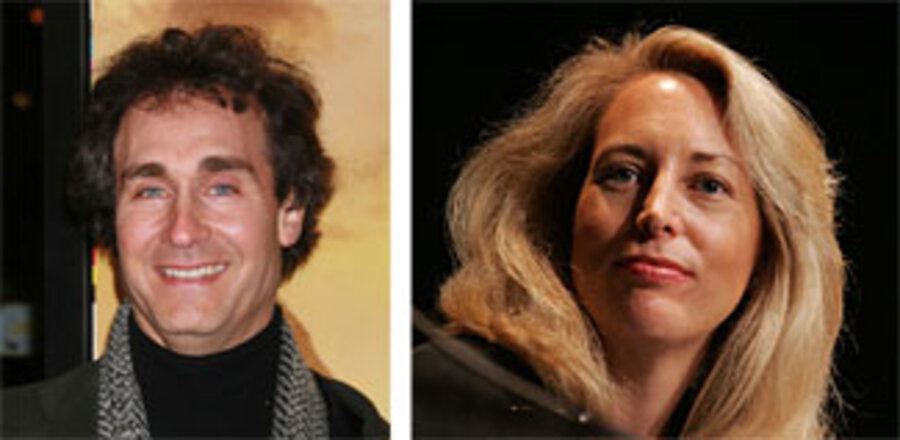Hollywood in Baghdad: US spy thriller filmed partly in Iraq
| Baghdad
Most movie directors and producers don't wear bulletproof vests when filming. But when the spy thriller "Fair Game" – starring Naomi Watts and Sean Penn – hits theaters next year, it will have the added distinction of being the first Hollywood movie to have been shot partly in Baghdad.
The film, by the director of "The Bourne Identity" and "Mr. and Mrs. Smith," is meant to be an entertaining and innovative spy movie rather than a faithful account of the episode in recent history it's based on – the unveiling of covert CIA agent Valerie Plame's identity by Bush administration officials in one of the most controversial sagas of the Iraq war.
"This is a real spy story, and it hopefully will be as exciting and successful as 'Bourne' was – it is 100 percent real, and part of chasing that reality involved coming here to Baghdad and filming," said director Doug Liman after a day's filming in June.
A task that, from outside the country at least, appears easier said than done.
"Everyone we were working with told us not to come," says producer Avram Ludwig. Landing at the Baghdad airport on a commercial flight from Jordan, the pair happened to arrive with Americans headed for the US Embassy who were given a security briefing in which they were told of recent unexploded roadside bombs, issued helmets and body armor, and told they would be driven very, very fast on what has become a relatively safe road to the Green Zone. "And these people were archaeologists," says Mr. Ludwig.
Not just another film about Iraq war
But the pair did not come all this way to make another movie about the Iraq war, emphasizes Mr. Liman. Despite the political nature of Ms. Plame's story, the film – 95 percent of which was shot in the US – is intended to be entertainment with a twist. The Baghdad scenes will use special effects to help convey what it was like to live in Iraq during the US invasion and the anarchy that followed – something Liman says film can convey better than TV or newspapers.
The movie is based on Valerie Plame Wilson's memoir: "Fair Game: My Life as a Spy, My Betrayal by the White House." The Central Intelligence Agency department she worked for sent her husband, diplomat Joseph Wilson, to Niger in 2002 to investigate allegations that Saddam Hussein's regime was trying to buy uranium yellowcake there – a key assertion in President Bush's case for invading Iraq and derailing its alleged weapons of mass destruction as laid out in his 2003 State of the Union address.
In July that year, several months after the war began, Mr. Wilson publicly revealed that he had found no evidence in Niger to support the yellowcake claim. Plame's cover was blown eight days later, effectively ending her career as a CIA agent.
Sean Penn, who plays Wilson, is one of the few actors to have been in prewar Iraq. Opposed to the war, he traveled to Badghdad in 2002 to meet Iraqis.
For shooting scenes in Baghdad, which follow an Iraqi nuclear scientist, Liman and Ludwig teamed with award-winning Iraqi director Oday Rasheed.
Seeking authenticity by filming in Baghdad
Armed with a letter from the Iraqi Interior Ministry and bulletproof vests demanded by their private security guards, the Americans shot street scenes in crowded markets, attracting so much attention that they could only stay in one location for 15 to 20 minutes at a time. At one point, though, the attention took the form of an Iraqi policeman buying them ice cream.
Most of the Iraq sequences have been filmed in Jordan, but Liman says he wanted to come to Baghdad for authenticity. "No amount of newspaper and television watching can accurately convey the experience [of being in Iraq].... Movies ultimately can convey that because it's a completely immersive experience," he says.
Mr. Rasheed looked through the camera lens at each video frame to determine whether the image would have looked different six years ago.
"My last movie was a heavily visual-effects movie, and now we're trying to use visual effects in conjunction with really being here so I wanted him to tell me what in the frame is accurate and what changed and what do I have to visually change to make it back to what it was," says Liman, who will use special effects to change the images.
The main missing element in today's streets, of course, is Saddam Hussein's image, which the producers hoisted onto buildings in Amman while shooting there.
"We thought about doing some of the work here, but I don't think the Iraqi people are ready for an American film crew to come in and start putting Saddam's image all over the sides of buildings again – there's not enough distance yet," says Liman.
In Jordan, the filmmakers re-created the US leaflet drop that asked Iraqis during the invasion not to resist.
"We were able to procure a Black Hawk helicopter and we were able to shut down downtown Amman … and we had a leaflet drop," says Liman. Their plan to use the real leaflets from 2003 vetoed by the Jordanian government, they dropped 100,000 blank pieces of paper. "People would have been freaking out, wondering, 'Is the United States government attacking Amman?' even though they were talking about Saddam Hussein," says Liman.
Given the spate of recent flops of Iraq-related films, Liman is making the film independently – something he hasn't done since 1996. He said, though, that he also wanted to help connect Iraq to the world.
"I thought that I could do my teeny little piece of that puzzle by coming here as a filmmaker and encouraging other filmmakers to come here," he says.





